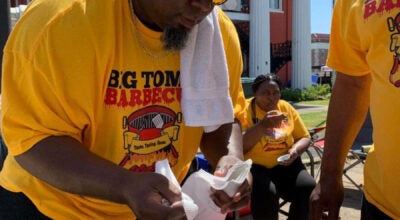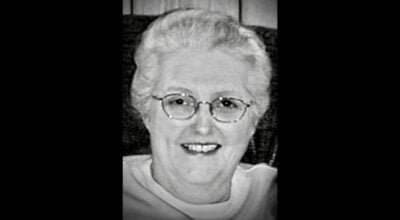Lane flew with the Tuskegee Airmen
Published 11:42 pm Tuesday, August 31, 2010
The story of the famous “Tuskegee Airmen,” America’s first African-American military aviators, has not escaped the review of historians, particularly in the past few years. The story takes on a special note as it relates to Demopolis.
Trained at Moton Field in Tuskegee to be pilots, mechanics and other support roles, the Tuskegee Airmen distinguished themselves as never having lost a bomber to enemy fire, a military record that is still unmatched in military history.
What may have been veiled in the exploits of the famed “red-tailed airmen” was that one of them was a native of Demopolis. His name was Allen Gaston Lane. He enlisted in the Army Air Corps on Feb. 18, 1942, at Craig Field in Selma, and graduated as a second lieutenant in Class 42-F-SE on July 3, 1942. Of the 28 men who started this class, Lane was one of only 14 who graduated the Army Air Corp Training Program.
In the early days of World War II, Negroes were not allowed to enlist in the Army Air Corps. In 1939, Congressional action enabled Negroes to enter civilian flight training.
Seeking the highest caliber of candidates, six historically black colleges were selected for participation in the program: Howard University, Hampton Institute, Delaware State, North Carolina A&T, West Virginia College and the Tuskegee Institute.
The Civilian Pilot Training Program, a new initiative sponsored by the federal government, gave many African-American college students a chance to earn their private pilot license. Several black colleges participated in the program, but learning to fly in the CPTP was not the same as becoming a pilot in the Air Corps.
The plan for admitting blacks developed by the Air Corps called for the construction of a new military airfield near Tuskegee to be devoted exclusively to training African-Americans to become Air Corps pilots.
The first class of 13 black aviation cadets, which included student officer Capt. Benjamin O. Davis Jr., began training on July 19, 1941. Rigorous training in subjects such as meteorology, navigation and instruments was provided in ground school. Successful cadets then transferred to the segregated Tuskegee Army Air Field to complete Army Air Corps pilot training.
The Air Corps oversaw training at Tuskegee Institute, providing aircraft, textbooks, flying clothes, parachutes and mechanic suits while Tuskegee Institute provided full facilities for the aircraft and personnel. Five of the first 13 graduated in March 1941.
The Tuskegee Airmen received many awards when they returned home, including the Distinguished Flying Cross, the Legion of Merit and the Red Star of Yugoslavia. Lockbourne Air Force Base was home base to the Tuskegee Airmen after World War II. The 332nd Fighter Group remained at Lockbourne, now named Rickenbacker Air National Guard Base, until the group’s deactivation in June 1949.
Lane was adjutant of the 100th Fighter Squadron and served as an administrative support leader of his unit. While piloting his plane over Anzio, Italy, in January 1944, Lane’s plane was struck by a flak burst and set afire. He was forced to bail out of his plane, but landed safely near an airfield at Nettuno and was returned to his base within hours.
Five years later, Lane was returning from a cross-country training flight to Lockbourne Air Base in Ohio when the engine of his P-47 fighter plane failed and he died on impact in the ensuing crash four miles southwest of the air base.
Lane saw action in North Africa and Italy during World War II and was awarded the Air Medal, European Theater Ribbon, American Campaign and World War II Victory Medal for his wartime services. The 31-year-old pilot was adjutant of the 100th Fighter Squadron at Lockbourne. He was survived by his wife, Rose Lane, and his daughter, Cheryl, who was 4 years old. He was the son of Mr. and Mrs. Allen L. Lane, who were residents of Demopolis. Full military rites were given in the Lockbourne Base Chapel.
Lane was the brother-in-law of Florine Lane, who was employed at Spight’s Department Store in Demopolis for many years. His brother, Jerome, was the grandfather of Florine Worthy. She and her brothers, Braxton Jr. and Allen, grew up in the Cherry Street residence of their great-uncle before the family moved to the southeast side of Demopolis.
By the end of the war, the Tuskegee Airmen were credited with 112 Luftwaffe aircraft shot down, the German-operated Italian destroyer TA-23 sunk by machine gun fire and destruction of numerous fuel dumps, trucks and trains. The squadrons of the 332nd Fighter group flew more than 15,000 sorties on over 1,500 missions.
The Tuskegee Airmen were awarded several Silver Stars, 150 Distinguished Flying Crosses, eight Purple Hearts, 14 Bronze Stars and 744 Air Medals. In all, 994 pilots were trained in Tuskegee from 1941 to 1946 with approximately 445 being deployed overseas and 160 airmen losing their lives in accidents or combat.
On March 29, 2007, about 350 Tuskegee Airmen and their widows were presented with the Congressional Gold Medal by President George W. Bush at a ceremony in the U.S. Capitol rotunda. The medal is on display at the Smithsonian Institute; individual honorees received bronze replicas.






